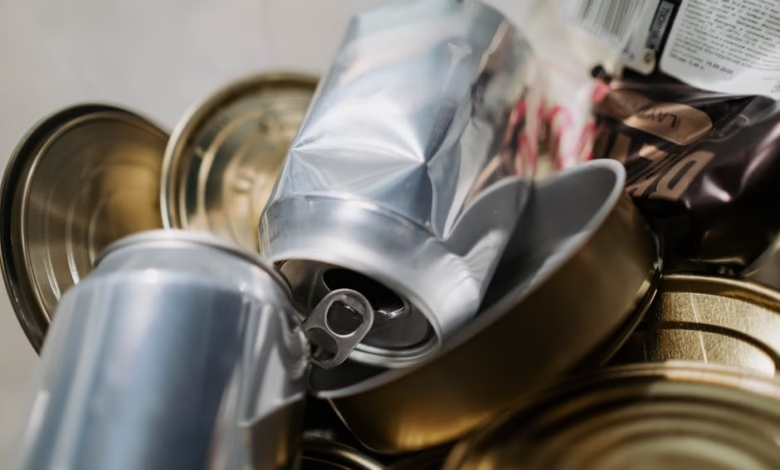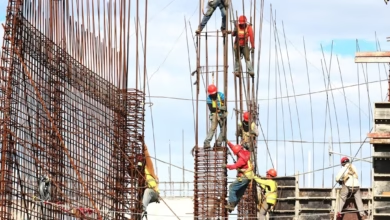Navigating Metal Recycling in 2024: Key Processes, Market Trends, and Innovations in Sustainable Production

The world of metal recycling is rapidly evolving, driven by the increasing demand for sustainable practices and the need to conserve our planet's finite resources. As industries continue to seek alternatives to traditional metal mining, the focus on metal recycling has gained immense traction. This article delves into the intricate processes involved in recycling various types of metals, including ferrous and non-ferrous metals, and highlights the significant role that precious metals like gold and silver play in this dynamic field. We will explore current market trends, offering insights into both precious and industrial metals, as well as the implications for metal commodities and investments. Furthermore, we will examine the exciting future of metal recycling, showcasing innovations in sustainable metal production and the advent of 3D printing technologies that are reshaping the landscape of metallurgy. From construction metals to aerospace metals, the opportunities for recycling base metals such as aluminum, copper, and zinc are vast, promising a greener future for industries and consumers alike. Join us as we navigate the complexities of metal recycling and uncover the trends that are defining the future of this vital sector.
- 1. Understanding Metal Recycling: Processes and Types of Metals Involved
- 2. Current Market Trends in Metal Recycling: Insights into Precious and Industrial Metals
- 3. The Future of Metal Recycling: Innovations in Sustainable Production and 3D Printing Metals
1. Understanding Metal Recycling: Processes and Types of Metals Involved
Metal recycling is a crucial process that contributes to sustainable metal production and helps mitigate the environmental impacts of metal mining. Understanding the intricacies of metal recycling involves recognizing the various processes and the types of metals involved, which can be broadly categorized into ferrous and non-ferrous metals.
Ferrous metals, primarily composed of iron, are essential in industries such as construction and automotive manufacturing. Steel, one of the most widely recycled metals, is a prominent example. The recycling process for ferrous metals typically begins with collection and sorting. Once sorted, these metals undergo shredding and melting, allowing for the creation of new steel products or metal alloys.
On the other hand, non-ferrous metals—such as aluminum, copper, zinc, and precious metals like gold and silver—are also pivotal in various applications. The recycling process for non-ferrous metals often involves more complex procedures, as these metals do not contain iron and may require specialized treatment methods. For instance, aluminum recycling can significantly reduce energy consumption compared to primary production, making it a popular choice in sustainable metal production.
In addition to these common metals, the recycling industry is increasingly focusing on rare earth metals and battery metals, which are vital for modern technologies, including electronics and renewable energy solutions. The demand for these metals is surging due to advancements in metallurgy and the rise of innovative applications, such as 3D printing metals.
Moreover, industries such as aerospace and jewelry fabrication rely heavily on precious metals like platinum and palladium. The recycling of these metals not only supports the supply chain but also aligns with gold investing and silver investing strategies, offering economic benefits alongside environmental responsibility.
As the metal trends evolve, understanding the processes and types of metals involved in recycling is essential for stakeholders in the market. By prioritizing metal recycling, industries can reduce metal corrosion, lower production costs, and promote a circular economy that enhances the longevity of metal commodities. This strategic approach is vital for the future, especially as global demand for construction metals and automotive metals continues to rise.
In conclusion, metal recycling encompasses diverse processes and a wide range of metals, from base metals to precious and rare earth metals, all playing a vital role in promoting sustainable practices across various industries.
2. Current Market Trends in Metal Recycling: Insights into Precious and Industrial Metals
The metal recycling industry is witnessing significant changes, driven by a combination of technological advancements, shifting consumer demands, and global market dynamics. As awareness grows around sustainable practices, the focus on recycling both precious and industrial metals has intensified, leading to notable market trends.
One of the most prominent trends is the increasing demand for non-ferrous metals, especially aluminum and copper, which are essential in various sectors such as construction, automotive, and aerospace industries. The rise of electric vehicles (EVs) and renewable energy technologies has further amplified the need for battery metals like lithium and zinc. This trend is closely linked to the ongoing push for sustainable metal production, as industries seek to reduce their carbon footprint by utilizing recycled materials rather than relying solely on metal mining.
In the realm of precious metals, gold and silver investing remains strong, driven by their status as safe-haven assets amid economic uncertainties. The market for jewelry metals is also adapting to consumer preferences for ethically sourced materials, leading to increased interest in recycled precious metals. Additionally, the rise of 3D printing technologies in metallurgy is opening new avenues for metal fabrication, allowing for more efficient use of metals and reduced waste.
Furthermore, the market for rare earth metals is gaining traction, particularly as these materials are critical for high-tech applications and clean energy technologies. This shift highlights the importance of sustainable practices in metal recycling, as the demand for these metals often outstrips supply from traditional mining operations.
The trends in metal commodities are also reflective of broader economic patterns. The volatility in prices for base metals like steel and aluminum, along with precious metals such as platinum and palladium, is influenced by global supply chains and geopolitical factors. As industries adapt to these fluctuations, the role of metal recycling becomes increasingly vital in ensuring a steady supply of materials while minimizing the environmental impact of metal corrosion and waste.
In summary, the current market trends in metal recycling emphasize a growing reliance on both precious and industrial metals. The integration of sustainable practices, coupled with advancements in technology and shifting consumer preferences, is reshaping the landscape of metal recycling and setting the stage for a more circular economy.
3. The Future of Metal Recycling: Innovations in Sustainable Production and 3D Printing Metals
The future of metal recycling is poised for transformative changes, driven by innovations in sustainable production and the rise of 3D printing metals. As global demand for metals continues to soar, the recycling of both ferrous and non-ferrous metals is becoming increasingly vital. This shift not only addresses the need for sustainable practices but also opens new avenues for metal commodities, particularly in sectors like construction, aerospace, and automotive industries.
One of the most significant advancements in metal recycling is the development of more efficient processes that enhance metal recovery rates. Technologies such as hydrometallurgy and pyrometallurgy are evolving, allowing for better extraction of valuable materials, including precious metals like gold and platinum, as well as rare earth metals critical in electronics and renewable energy technologies. These innovations also reduce the environmental impact associated with metal mining, making metal production more sustainable.
Furthermore, the advent of 3D printing metals is revolutionizing how we perceive metal fabrication. This technology allows for the precise layering of metal alloys, such as aluminum, steel, and titanium, providing manufacturers with the ability to create complex designs while minimizing waste. 3D printing also supports the use of recycled metals, integrating them back into the production cycle. As industries increasingly adopt this method, the demand for base metals like copper and zinc is expected to shift, favoring high-quality recycled materials.
In addition to enhancing production efficiency, these innovations are crucial for gold investing and silver investing, as they ensure a stable supply of these valuable metals in the market. As consumers and investors become more environmentally conscious, the focus on sustainable metal production will likely drive investment towards companies that prioritize recycling and responsible sourcing.
Moreover, as automotive and energy sectors push for lightweight materials to improve fuel efficiency and reduce emissions, the recycling of lightweight metals such as aluminum and lithium becomes essential. This trend not only supports sustainability but also creates a circular economy where metals can be reused, thus reducing metal corrosion and extending the lifecycle of these materials.
In conclusion, the future of metal recycling is bright, with sustainable innovations and 3D printing technologies leading the charge. As the industry adapts to meet the growing demand for metals while minimizing environmental impact, we can expect to see significant shifts in how metals are produced, used, and recycled, ultimately shaping the landscape of metal commodities for years to come.
In conclusion, the landscape of metal recycling is evolving rapidly, driven by the increasing demand for sustainable metal production and technological innovations in metallurgy. As we have explored, understanding the processes and types of metals involved—ranging from ferrous and non-ferrous metals to precious and base metals—is essential for appreciating the full scope of metal recycling. Current market trends reveal a growing interest in precious metals such as gold and silver investing, alongside the rising significance of industrial metals like aluminum, copper, and steel in various sectors, including construction, automotive, and aerospace.
Looking ahead, the future of metal recycling appears promising, with advancements in 3D printing metals and innovations aimed at reducing metal corrosion and enhancing the durability of metal alloys. The integration of rare earth metals and battery metals into recycling processes highlights the shift towards more sustainable practices, aligning with global efforts to minimize the environmental impact of metal mining.
As the demand for metal commodities continues to rise, staying informed about these metal trends will be crucial for investors and industries alike. Embracing metal recycling not only contributes to more efficient resource management but also supports the transition to a circular economy, ensuring that valuable metals are reused and repurposed for generations to come.
References:
[Add your list of sources here following APA format]




